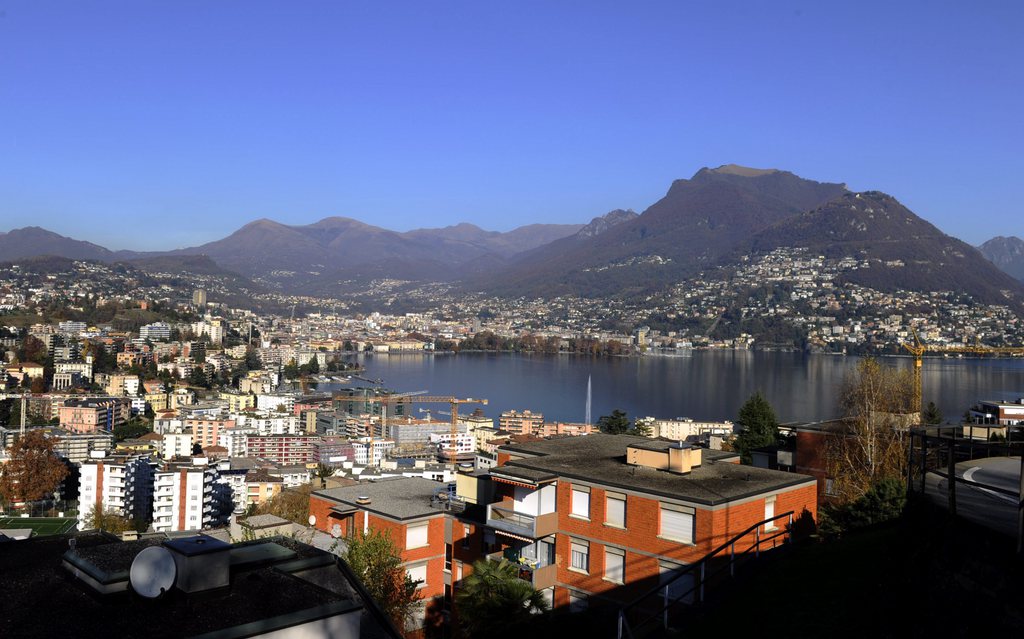Home town is where the heart is

Open a Swiss passport and instead of the usual birthplace it will show a citizen’s ‘place of origin’, where their ancestors and family names originate. Despite recent changes paring down the system, this spot remains important for many people.
As a rule the Swiss inherit their place of origin from their fathers. The village, town or city stores the certificates of family origin when citizens leave; and it records births, marriages and deaths as the parish registers used to do.
Many Swiss remain emotionally attached to these physical roots, particularly those who live abroad.
“Many in my area have returned to Switzerland to find their roots,” said Beth Zurbuchen, president of the Swiss Center of North America. “I had the opportunity to explore my maternal grandfather’s farm and my paternal great-grandfather’s home of Habkern. To know I have family, no matter how distant, pulls at the heartstrings and brought tears to my eyes.”
After parliament decided at the end of 2012 to scrap the place of origin’s obligation to contribute to citizens’ welfare benefits, the registry duty is the only function left to this system. The home commune has lost so much in practical significance over the past years, that the country even stopped surveying them for the census.
In theory, the Swiss only have one origin, but in practice, they often waiver when asked about their home. “I always give my place of origin when asked where in Switzerland I am from,” explains Katharina Allen who lives in Perth, Canada. “My sister, on the other hand, names her birthplace and the place she lived in for a short time before moving to Canada as a child.”
The place of origin and citizenship are tied to a person, irrespective of residence. The commune of residence on the other hand is a territorial entity, comprising its residents.
According to civil law, the home of a person is tied to his or her citizenship, which is first of all the communal and only in the second instance the cantonal and federal citizenships.
Citizenship is acquired through birth or marriage. The place of origin is passed on to the wife, who can keep her own place of origin, and to offspring from the male ancestors.
Swiss citizens list their place of origin on almost all official documents such as passports and identification cards. Those who have more than one place of origin have to decide which one they want to carry in their passport or identification card.
In the federation, commoners from the middle of the 18th century were accorded a place of origin, usually the residence of the head of the family. The home commune had the duty to maintain the register for the family records of its citizens, the precursor for today’s registry offices.
Other states do not know the concept of a place of origin. Their citizens have a national citizenship of the respective nation. They are not at the same time citizens of a commune or a canton. In those states, the birthplace has more significance and is therefore stated in official documents.
Family ties
In 2001, parliament for the last time discussed replacing the origin with the birthplace for identification purposes. In the end, it was decided to stick to the status quo because as Walter Glur of the Swiss People’s Party argued the birthplace is too random, “birth could take place anywhere,” while the blood running in your veins is always your family’s. Many Swiss agree.
“My place of birth has no significance to me: My mother just happened to be in Zurich that day,” said Jack Gruring, a native of the town of Biel, now living in Croatia. “For me it is important where I grew up. And my place of origin is very significant because it stores my family’s history,” he wrote on the social media website swisscommunity.org.
Many Swiss can trace their family names back to their home towns. The Register of Swiss Surnames, which is run by the Historical Dictionary of Switzerland, offers access to more than 48,000 entries of names, going back hundreds of years. The Chevrolets hail from a couple of dwellings in canton Jura and the Caillers from the shores of Lake Geneva.
“I’m very much attached to my origin because all my ancestors are buried there in a little cemetery in Cadro, my place of origin. In everyday life, I never meet anybody with my family name,” said Manuelle Merenda who lives in Aix en Provence. “I was surprised to find that about half of the gravestones in that cemetery carried either the name Merenda or Ferrari.”
Every Zurbuchen originates in Habkern, a commune over 700 years old with a population of about 640 today. Andreas Zurbuchen, the village clerk, can trace back his family to Peter, the progenitor of the entire clan, who lived on a piece of land called zer Buchen (literally, next to the beech tree) between 1470 and 1535.
In the 16th century, some Swiss emigrated to escape religious persecution. As oppression of the radical Protestant Anabaptists spread, followers – who originally came from other European countries to Switzerland – migrated to the US, founding the Mennonite and Amish communities.
For about 450 years, Switzerland’s major export was soldiering. Between 1400 and 1848, more than two million mercenaries were employed by foreign powers, according to estimates. Later, Swiss emigrants settled as merchants, missionaries, trades people and farmers.
The first wine of the US was made by John James Dufour of Vevey at the end of the 18th century, long before Donald Hess engaged in California’s viticulture. In the 19th century it was the chocolate makers who became famous in Germany, Russia and Scandinavia.
Louis Chevrolet, born in La Chaux-de-Fonds, built a car empire, while the Guggenheim family of Swiss-Jewish ancestry altered the way we view modern art. Othmar Ammann, an engineer born in Schaffhausen, built the bridges of New York City.
More recent emigrants were psychiatrist Elisabeth Kübler-Ross, the author of near-death studies, and Adolph Rickenbacher who invented the electric guitar.
At the end of 2012, just under 716,000, – about a tenth of the Swiss nationals -, were registered abroad, according to the foreign ministry. Three out of five of those lived in Europe, a quarter settled in the Americas, another quarter in France.
Back to their roots
Civil registry offices, cantonal archives and church records are the most important depositories for genealogical research into entire clans. And, because the community rolls were not destroyed during war, they are still very much complete, often going back beyond the 15th century.
“Although I don’t have a personal affinity with my place of origin, it is important from a historical perspective,” states Roland Isler, who lives in Melbourne. “It’s where all records of my family are being kept, regardless of where I and my extended family members live or have lived. If ever I want to research my family history, I know where to go.”
Many Swiss who emigrated in the past century, are still proud of being part of their origin’s nobility. Silverio Petrini moved to Venezuela 44 years ago from Comano. “We are one of the patrician families of Comano,” Petrini stated. “For me my place of origin has a lot of importance. I’m rooted there, and my parents are buried there.”
Those rights never came for free. From the beginning, citizens could be drafted by the sovereign to defend the land, and any new burgess had to buy himself into the commune. In return for conscription, until recently the place of origin also had to financially support its citizens if they sunk into poverty.
This social duty is now being abandoned because of the financial burden on smaller rural communes, which often may count more citizens than residents. The obligation to bail out its impoverished burgess was also a strain on tight budgets in the 19th century. Some communes got rid of their paupers by offering to pay their Atlantic crossing for a waiver on citizenship.
Many accepted the offer, and settled in larger cities in North or South America or founded rural communes such as Highland, Gruetli or Bernstadt. More than 1.3 million people of Swiss descent live in the US and Canada today, according to the Swiss Center.
Many of the 400,000 Swiss who emigrated between 1850 and 1914 founded colonies and – witness to their attachment to their roots – named them after their origins. Bern has 26 namesakes in the US, Lucerne has 16.
Zurbuchen says she feels lucky to have Swiss roots she was able to physically visit.
“When I stood in the exact spot where my ancestors had to take the decision to leave Switzerland so that the family could live on, I had the intensely personal feeling that this was where I belonged.”
For Pittsburgh Steelers quarterback Ben Roethlisberger, whose family emigrated from the cheese-making region Emmental four generations ago, it was easy to track down his roots. Before 1800, the Roethlisbergers all lived in a handful of hamlets scattered around Langnau, according to the surnames register.
With the help of Swiss Roots, which was later folded into the Swiss Center of North America, in 2006 the US football star discovered his origins in Lauperswil. He met relatives living near his family’s farm, tasted local cheese and tried hornussen – the indigenous Swiss golf, which incidentally was first mentioned in 1625 in his home village.
(With input from Marcela Aguila Rubin)

In compliance with the JTI standards
More: SWI swissinfo.ch certified by the Journalism Trust Initiative

You can find an overview of ongoing debates with our journalists here. Please join us!
If you want to start a conversation about a topic raised in this article or want to report factual errors, email us at english@swissinfo.ch.